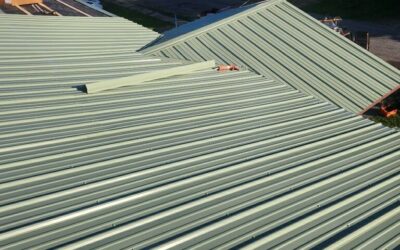What You Need to Know About Box Vents for Roof Ventilation: A Comprehensive Guide from S&K Construction and Remodeling LLC
When it comes to roofing, one of the most important but often overlooked components is the roof ventilation system. Proper ventilation plays a crucial role in extending the life of your roof, preventing damage to your home, and maintaining the overall comfort of your living space. One popular option for roof ventilation is the box vent.
At S&K Construction and Remodeling LLC, we specialize in providing high-quality roofing and home remodeling services throughout Northeast Ohio, including cities such as Cleveland, Medina, Lakewood, Youngstown, Chagrin Falls, and Beachwood. In this blog post, we’ll explore everything you need to know about box vents, including how they work, their benefits, installation considerations, and why they may be the right choice for your home. By the end of this post, you’ll have a comprehensive understanding of box vents and how they can improve your roof’s performance.
What Are Box Vents?
A box vent, also known as a static vent or louvered vent, is a type of roof vent that provides passive ventilation for your attic. These vents are typically rectangular or square in shape and are placed along the ridge or peak of the roof. Box vents allow hot air, moisture, and humidity to escape from your attic space, while allowing fresh air to enter through the soffit vents (or intake vents) below the roofline.
In a well-balanced ventilation system, box vents work in conjunction with intake vents to create a natural flow of air. This helps regulate the temperature in your attic and prevents the buildup of moisture, which can lead to mold growth, wood rot, and damage to your roofing materials. Box vents do not require electricity or mechanical components to operate, making them an energy-efficient and low-maintenance solution for roof ventilation.
How Do Box Vents Work?
Box vents operate using the principle of natural airflow, which relies on the differences in air pressure between the inside of your attic and the outside environment. Here’s how the process works:
- Hot Air Rises: As heat builds up inside your attic, the air becomes warmer and lighter. Hot air naturally rises toward the highest point of the attic, where the box vents are located.
- Exhausting Hot Air: The box vents allow the warm air to escape from the attic. This helps regulate the temperature inside the attic, preventing excessive heat buildup that could damage your roofing materials.
- Fresh Air Intake: Fresh air enters the attic through the soffit vents located near the eaves of the roof. This intake of cooler air helps push the hot air out through the box vents, creating a continuous flow of ventilation.
- Maintaining Balance: A well-designed roof ventilation system ensures that the amount of air coming in through the intake vents is equal to the amount of air being exhausted through the box vents. This balance is essential for efficient ventilation and maintaining proper airflow in your attic.
The Benefits of Box Vents for Roof Ventilation
There are several key benefits to installing box vents on your roof. Here are some of the primary advantages:
1. Improved Attic Ventilation
The primary benefit of box vents is their ability to improve attic ventilation. Proper attic ventilation helps regulate the temperature inside the attic, reducing the risk of heat buildup. During the summer months, excessive heat in the attic can cause your air conditioning system to work harder, leading to higher energy bills. By installing box vents, you can reduce heat buildup and maintain a more comfortable temperature in your home.
2. Prevention of Moisture Buildup
In addition to heat, humidity and moisture can accumulate in your attic. This moisture can come from a variety of sources, such as warm air escaping from your living space or leaks in the roof. If moisture is not allowed to escape, it can lead to the growth of mold and mildew, which can damage your home’s structure and pose health risks.
Box vents help prevent moisture buildup by allowing air to flow freely through the attic. By venting excess moisture, you can protect your roof, attic, and home from the damaging effects of water and humidity.
3. Extended Roof Life
When your attic is properly ventilated, your roofing materials are less likely to be damaged by excessive heat or moisture. Without adequate ventilation, heat can cause shingles to crack, warp, or lose their granules. Similarly, trapped moisture can cause wood rot, rust, and other forms of damage to your roof and attic structure.
By installing box vents as part of your roof ventilation system, you can extend the lifespan of your roof and prevent costly repairs. Proper ventilation helps maintain the integrity of your roofing materials and reduces the likelihood of premature roof failure.
4. Energy Efficiency
Proper attic ventilation can also improve your home’s energy efficiency. During the summer, an overheated attic can cause your air conditioning system to work harder to cool your home, leading to higher energy costs. In the winter, inadequate ventilation can trap warm air in the attic, causing your heating system to work harder to maintain a comfortable temperature.
By installing box vents, you can help regulate the temperature in your attic and reduce the strain on your HVAC system. This leads to lower energy bills and a more energy-efficient home.
5. Low Maintenance and Long-Lasting
Box vents are a low-maintenance solution for roof ventilation. Once installed, they require very little upkeep. The design of box vents allows them to work passively without any moving parts, reducing the need for repairs or replacements. Additionally, box vents are highly durable and can withstand harsh weather conditions, making them a long-lasting investment for your home.
Installation of Box Vents
The installation of box vents requires careful planning and precise execution to ensure optimal airflow and ventilation. Here’s a general overview of the installation process:
- Determine Ventilation Needs: The first step in installing box vents is to assess your home’s ventilation needs. This involves evaluating the size of your attic, the number of intake vents, and the overall airflow required for your home. A professional roofer, like S&K Construction and Remodeling LLC, can help determine the right number and placement of box vents for your roof.
- Placement of Box Vents: Box vents are typically installed along the ridge or peak of the roof, as this is the highest point of the attic. The placement of the vents should allow for the most efficient airflow and ensure that the air can escape freely. It’s important to ensure that the vents are spaced evenly and positioned to provide proper coverage for the entire attic.
- Cutting Openings for the Vents: Once the placement is determined, the roofer will cut openings in the roof decking to accommodate the box vents. These openings must be carefully measured to match the size of the vents and ensure a secure fit.
- Installing the Vents: The box vents are then installed by securing them to the roof with nails or screws. The vents are designed to be weather-resistant, so they are equipped with flashing to prevent leaks and ensure that they are securely sealed against the roof.
- Inspecting the Ventilation System: After the vents are installed, the roofer will inspect the entire roof ventilation system to ensure that it is functioning properly. This includes checking the intake vents, soffit vents, and box vents to ensure that there is proper airflow throughout the attic.
Considerations for Choosing Box Vents
While box vents are a great option for roof ventilation, there are several considerations to keep in mind when choosing the right system for your home:
1. Size of Your Attic
The size of your attic plays a significant role in determining how many box vents you’ll need. Larger attics may require more vents to ensure proper airflow, while smaller attics may only need a few vents. A professional roofer can assess the size of your attic and recommend the appropriate number of box vents.
2. Climate and Weather Conditions
The climate in your region can also affect the type of roof ventilation system you need. If you live in an area with hot summers and cold winters, such as Northeast Ohio, you may benefit from a well-balanced ventilation system that includes box vents. In areas with extreme weather conditions, additional features like wind-resistant or hail-resistant vents may be necessary.
3. Aesthetics and Roof Design
Box vents are available in a variety of styles and colors, allowing you to choose vents that complement the overall look of your roof. If aesthetics are important to you, it’s a good idea to select vents that blend seamlessly with your roof’s design.
4. Roof Slope and Shape
The slope and shape of your roof can also impact the placement of box vents. Steeply pitched roofs may require more vents to ensure proper airflow, while low-pitched roofs may need fewer vents. A professional roofer can assess your roof’s design and make recommendations accordingly.
Why Choose S&K Construction and Remodeling LLC for Your Box Vent Installation?
At S&K Construction and Remodeling LLC, we have years of experience installing high-quality roofing systems for homeowners in Northeast Ohio. Here’s why you should choose us for your box vent installation:
- Expert Roofers: Our team of experienced roofers understands the importance of proper roof ventilation and will ensure that your box vents are installed correctly for maximum efficiency.
- Personalized Recommendations: We provide personalized recommendations based on your home’s specific needs, ensuring that your roof ventilation system is tailored to your attic’s size, shape, and airflow requirements.
- High-Quality Materials: We use only the highest-quality materials to ensure that your box
 (440) 307-2060
(440) 307-2060



